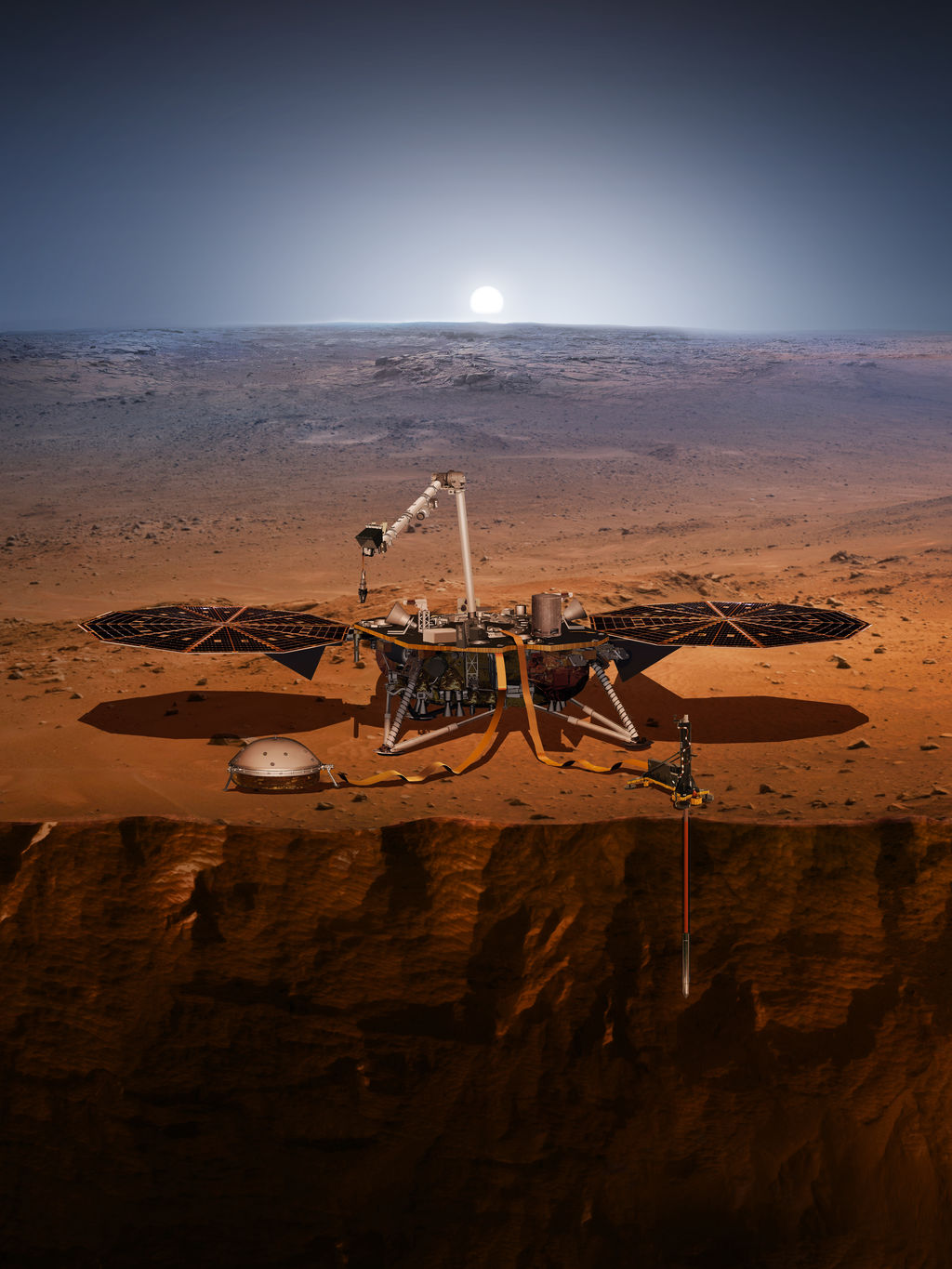Deep InSight: NASA's Next Mars Lander Will Probe Red Planet's Interior
NASA is about to launch a spacecraft that will investigate Mars' deepest, darkest secrets.
The agency's InSight lander is scheduled to lift off atop a United Launch Alliance Atlas V rocket early Saturday (May 5) from Vandenberg Air Force Base in California.
If all goes according to plan, the solar-powered spacecraft will touch down on a smooth, flat plain just north of the Martian equator on Nov. 26, then spend at least two years studying the Red Planet's interior structure and composition. [Where to Watch InSight's Mars Launch from the California's Coast]
"In essence, it will take the vital signs of Mars — its pulse, temperature and much more," Thomas Zurbuchen, head of NASA's Science Mission Directorate, said during a news conference in late March. "We like to say it's the first thorough checkup since the planet formed 4.5 billion years ago."

InSight — which is short for Interior Exploration using Seismic Investigations, Geodesy and Heat Transport — will use two science instruments to do this work. One, a seismometer called the Seismic Experiment for Interior Structure (SEIS), will detect and characterize ground-shaking events such as "marsquakes" and meteorite impacts. SEIS' data will help scientists better understand the Red Planet's crust, mission team members have said.
SEIS is exquisitely sensitive and, as a result, must be situated inside a vacuum chamber to tamp down noise. In late 2015, the mission team noticed a leak in this vacuum chamber. The issue couldn't be fixed in time to meet the original launch window of March 2016, delaying the liftoff more than two years. (Mars and Earth align favorably for interplanetary missions just once every 26 months.)
The other instrument, the Heat Flow and Physical Properties Package (HP3), will hammer itself up to 16.5 feet (5 meters) beneath the red dirt and measure how much heat is flowing down there. This information will reveal a great deal about the planet's interior and how it has evolved over time, according to InSight scientists.
Get the Space.com Newsletter
Breaking space news, the latest updates on rocket launches, skywatching events and more!
InSight will also conduct another investigation, called the Rotation and Interior Structure Experiment, using its communications gear. The lander's handlers will monitor InSight's location precisely — to within just 4 inches (10 centimeters) or so — in an attempt to spot slight wobbles in Mars' axis of rotation. Analysis of such wobbles will provide information about the planet's core, including its size, mission team members have said. [Mars InSight: NASA's Next Martian Lander in Pictures]
Taken together, InSight's observations should shed considerable light on the formation of rocky planets such as Earth, whose early history is tough to interpret thanks to extremely active geology.
"The goal of InSight is nothing less than to better understand the birth of the Earth — the birth of the planet that we live on," mission principal investigator Bruce Banerdt, of NASA's Jet Propulsion Laboratory (JPL) in Pasadena, California, said during the late March news conference. "And we're going to do that by going to Mars."
The body of the 790-lb. (358 kilograms) InSight is based heavily on NASA's Phoenix Mars lander, which detected water ice in the Red Planet's far north in 2008. American investment in the InSight mission is $814 million, with about $163 million of that going to launch services, NASA officials said.
On top of that outlay, France and Germany have contributed a total of $180 million, primarily to develop the SEIS and HP3 instruments. (The French space agency CNES provided SEIS, and the German Aerospace Center built HP3.)
NASA and JPL (which leads the InSight mission) have also chipped in an additional $18.5 million for a historic technology demonstration called Mars Cube One, or MarCO. MarCO consists of two briefcase-size spacecraft, dubbed Wall-E and Eva, that will launch with InSight but fly separately to Mars.
Wall-E and Eva will aim to become the first "cubesats" ever to travel to another planet, potentially blazing a trail through deep space that other small, relatively cheap spacecraft could follow. Wall-E and Eva may beam data about InSight's Mars entry, descent and landing back to Earth as it's happening, but this potential contribution isn't critical to the lander's mission. NASA's Mars Reconnaissance Orbiter, which has been circling the Red Planet since 2006, will perform this relay work regardless of what Wall-E and Eva manage to do, agency officials said.
Follow Mike Wall on Twitter @michaeldwall and Google+. Follow us @Spacedotcom, Facebook or Google+. Originally published on Space.com.
Join our Space Forums to keep talking space on the latest missions, night sky and more! And if you have a news tip, correction or comment, let us know at: community@space.com.

Michael Wall is a Senior Space Writer with Space.com and joined the team in 2010. He primarily covers exoplanets, spaceflight and military space, but has been known to dabble in the space art beat. His book about the search for alien life, "Out There," was published on Nov. 13, 2018. Before becoming a science writer, Michael worked as a herpetologist and wildlife biologist. He has a Ph.D. in evolutionary biology from the University of Sydney, Australia, a bachelor's degree from the University of Arizona, and a graduate certificate in science writing from the University of California, Santa Cruz. To find out what his latest project is, you can follow Michael on Twitter.









